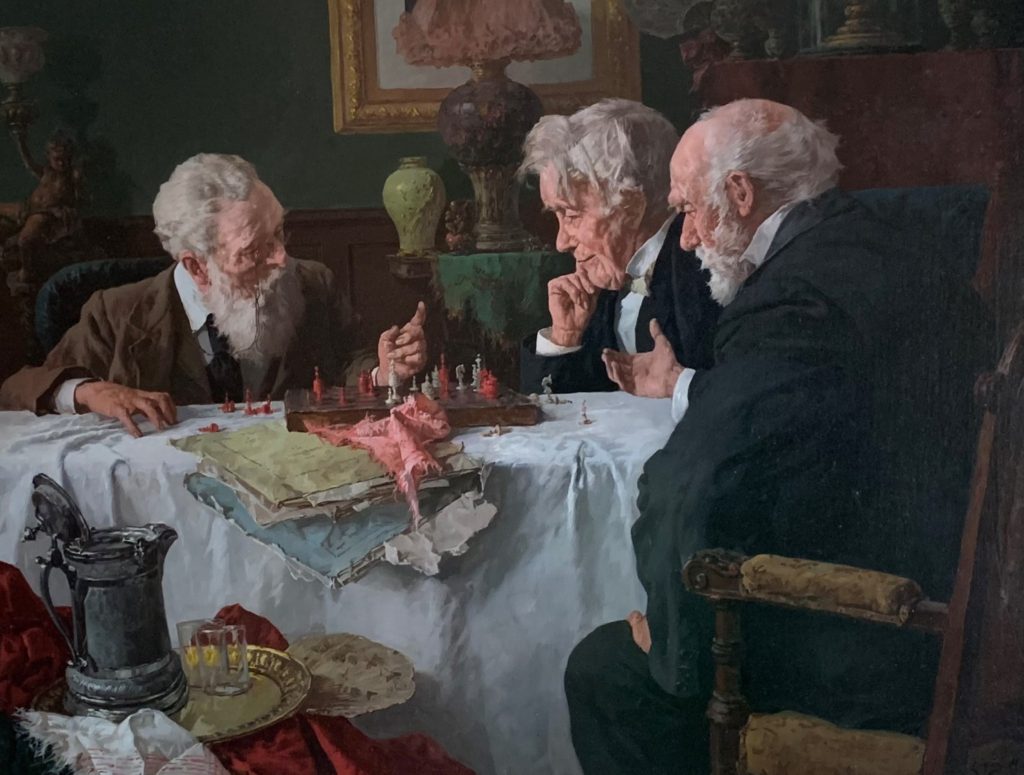
oil on canvas, 18 x 24
Chess Players by Louis Henri Moeller
Louis Henri Moeller, a native of New York, rose to prominence as one of America’s leading anecdotal genre painters during the late 19th and early 20th centuries. His favored subject matter often featured distinguished elderly men engaged in everyday activities within refined interior settings that mirrored Victorian tastes.
Born into a family with artistic inclinations, Moeller, the son of a decorative painter, received his initial artistic education from his father. Subsequently, he further honed his skills through classes at the National Academy of Design. Seeking broader artistic influences, Moeller spent six years studying in Munich under the tutelage of notable figures like Frank Duveneck, Ludwig Lofftz, and Feodor Dietz. During this period, he became part of a cohort of American artists dedicated to emulating the style of 17th-century Dutch masters.
Upon returning to New York, Moeller established his studio, engaging in decorative painting while refining the distinctive genre style for which he would become renowned. His artistic prowess was duly recognized when he earned the National Academy’s Hallgarten Prize for his small yet captivating painting titled “Puzzled,” earning him the status of an Associate Member.
Moeller’s signature genre paintings were characterized by their modest format, featuring small animated figures vying for the viewer’s attention amidst carefully composed interior scenes. Notably, objects within his compositions were treated as almost independent still-life elements, often described as “objets de vertu” – coveted collector’s items. Through this unique approach, Moeller left an indelible mark on American art, capturing the essence of everyday life with a meticulous blend of skill and narrative depth.